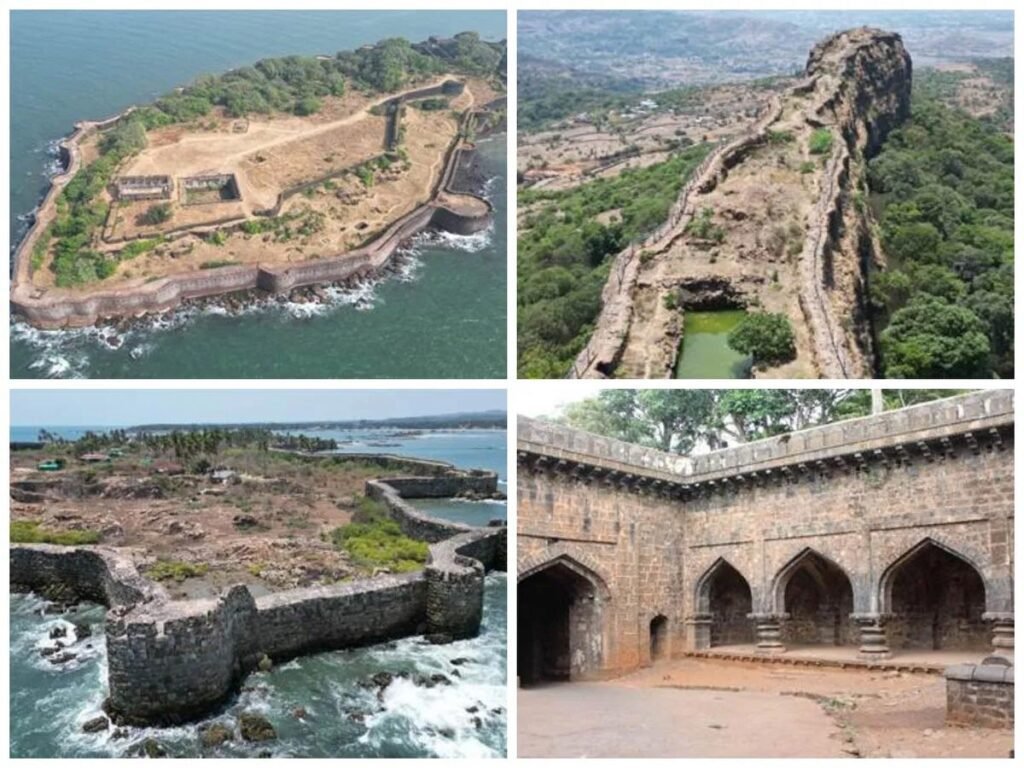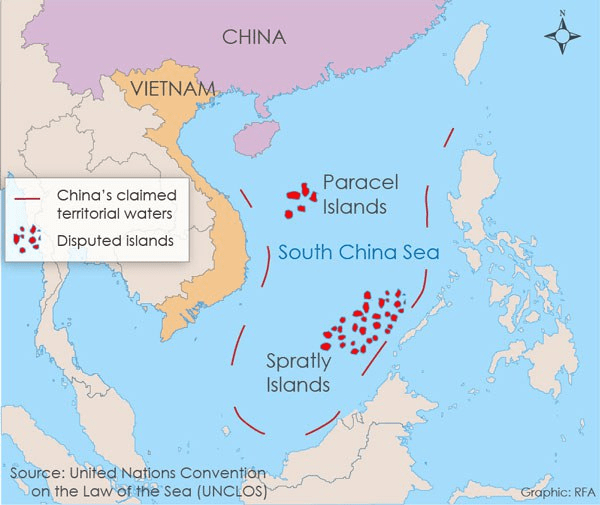
SUSPENSION OF MPs IN INDIA
Syllabus: GS.2: Indian Polity: Sessions of the Parliament

Why in News: Suspended MPs are set to return as the last session of the 17th Lok Sabha commences. The Interim Budget 2024 will start from January 31st.”
About the Suspension of MPs in India
- What is the reason for suspending an MP?
- The Presiding Officer (Speaker of Lok Sabha or Chairperson of Rajya Sabha) is responsible for maintaining order in the House to ensure smooth proceedings.
- In order to ensure that proceedings are conducted in the proper manner, the Speaker/ Chairman is empowered to force a Member to withdraw from the House.
- Rules Governing Suspension:
- Rule 374 allows the Speaker to name and suspend a Member obstructing House business.
- Rule 374A, added in 2001, automatically suspends a Member for grave disorder without a motion.
- Similar provisions exist in the Rajya Sabha under Rules 255 and 256.
- Suspension occurs when the Presiding Officer (Speaker or chairperson) aims to maintain order for smooth House functioning.
- Rules like 373, 374, and 374A empower the Speaker to direct withdrawal or suspend members for disorderly conduct.
- In Rajya Sabha, similar provisions exist under Rules 255 and 256, allowing the Chairperson to take action.
- Extremity of MP Suspension:
- Suspending MPs evokes strong reactions, but it’s recognized as a necessary balance between discipline and democratic values.
- Both ruling and opposition parties advocate for discipline and protest rights, with positions often changing depending on their roles.
- In summary, the suspension of MPs involves rules for maintaining order, with considerations for democratic principles and party dynamics.
INTERIM BUDGET
Syllabus: GS.2: Indian Polity & Economy: Terms Associated with Budget
Why in News: On February 1, Union Finance Minister Nirmala Sitharaman will table an interim budget for the fiscal year 2024-25 in Parliament, which will come into effect from April 1, 2024.

What is an Interim Budget?
- The Interim Budget presented by an outgoing government outlines its anticipated expenditures and receipts till the formation of the new government.
How it differs from a full-fledged Budget?
- A comprehensive budget covers government finances, including earnings, spending, allocations, and policy declarations. It guides the country’s economic path for a full fiscal year, while an interim budget only provides financial details for a transitional period.
- The Economic Survey, prepared by the Chief Economic Advisor, is usually released just before the regular budget, but not before an interim budget to avoid disruptions due to potential government changes.
- With general elections scheduled for April-May 2024, a full budget is expected to be presented by the new government in July 2024.
Why Interim Budgets are Termed ‘Vote on Account’
- In the absence of any constitutional prohibition, incumbent governments typically refrain from making major policy announcements during a vote on account.
- Termed as a ‘vote on account,’ this interim budget serves as authorization for specific expenditures until a new government assumes power.
- The Election Commission of India imposes restrictions on interim budgets to prevent undue influence on voters, prohibiting major tax or policy reforms.
- Typically effective for two months, a vote on account can be extended if necessary, as per Article 116 of the Constitution, allocating upfront budget from the Consolidated Fund of India to address immediate expenditure needs.
ALSO READ
MARATHA MILITARY LANDSCAPES OF INDIA
Syllabus: GS.1: Art & Culture
Why in News: The Maratha Military Landscape has been India’s nomination for the UNESCO World Heritage List of 2024-24.

Development and Significance
- The Maratha Military Landscapes of India emerged between the 17th and 19th centuries, showcasing an exceptional fortification and military system.
- This network of forts, over 390 in Maharashtra alone, integrates diverse landscapes and physiographic features of the Indian Peninsula.
Fortification Hierarchies and Protection
- Only 12 forts are selected for special recognition, with eight protected by the Archaeological Survey of India and four by the Directorate of Archaeology and Museums, Government of Maharashtra.
- These forts vary in types, including hill forts, coastal forts, island forts, and hill-plateau forts.
Historical Context
- Originating during the reign of Chhatrapati Shivaji Maharaj in the 17th century, the Maratha military ideology persisted through subsequent rules until the Peshwa rule in 1818 CE.
Nomination for World Heritage Status
- There are two categories of nomination — cultural and natural criteria, the Maratha military landscapes are nominated in the category of cultural criteria.
- There are six criteria (i to vi) for cultural sites and four criteria (vii to x) for natural sites for inclusion in the World Heritage List.
- The Maratha military landscapes of India is nominated under
- Criterion (iii): Bears unique testimony to a cultural tradition or civilization, living or extinct.
- Criterion (iv): Exemplifies a significant stage in human history through its architecture or landscape.
- Criterion (vi): Directly linked with events, traditions, beliefs, or artistic works of universal significance.
- At present in India, there are 42 World Heritage sites, out of which 34 are cultural sites, seven are natural sites whereas one is mixed site.
- In Maharashtra there are six World Heritage Sites, five cultural and one natural.
- These are, Ajanta Caves (1983), Ellora Caves (1983), Elephanta Caves (1987), Chhatrapati Shivaji Maharaj Terminus (formerly Victoria Terminus) (2004), Victorian Gothic and Art Deco Ensembles of Mumbai (2018) and Western Ghats of Maharashtra, Karnataka, Tamil Nadu and Kerala is serial property in natural category (2012).
- The Maratha Military Landscapes of India, included in the tentative list of World Heritage Sites in 2021 is the sixth cultural property nominated for inclusion, from Maharashtra.
RELEVANCE OF GANDHI IN MODERN CONTEXT
Syllabus: GS.1, Ethics & Essay: Historical Personalities in News
Why in News: Prime Minister Narendra Modi solemnly commemorated the 76th death anniversary of Mahatma Gandhi on January 30th, paying heartfelt tributes to the Father of the Nation.

About Gandhian Principles
- Gandhian principles encapsulate a strategy grounded in truth, sacrifice, non-violence, selfless service, and cooperation.
- Mahatma Gandhi advocated bravery over cowardice, emphasizing the importance of expressing views without resorting to violence, advocating instead for the use of truth and non-violence as weapons in conflicts.
- Central to Gandhi’s philosophy was the belief that “there is no god higher than truth,” and he saw non-violence as the ultimate solution to global problems.
- In contemporary contexts, Satyagraha, once a political resistance tool, has evolved into a comprehensive approach to life, emphasizing truth and moral courage. Gandhi’s utilization of non-violence as the primary tool in India’s independence struggle exemplifies the effectiveness of his methods.
The Gandhian Methods of Struggle
- Satyagraha: Gandhi’s approach centered on winning hearts through patience, employing nonviolence, non-cooperation, truth, and honesty to secure India’s independence from British rule.
- Truth: Gandhi emphasized personal examination over blind acceptance, asserting that truth holds more power than any weapon.
- Non-violence: Influenced by Jainism, Buddhism, Bhagavad Gita, and Christianity, Gandhi believed in nonviolent resistance as the sole means for social change, opposing all forms of exploitation and injustice.
- Peaceful Opposition: Gandhi advocated for opposing evils with nonviolent and moral means, believing in the superiority of love and mutual respect in dealing with adversaries.
In modern times, nonviolent methods of action have been a powerful tool for social protest. There are many examples of non violence like civil resistance, non-violence resistance, and civil revolution.
Examples:
- Martin Luther King adopted the methods of Satyagraha in his fight against the racial discrimination of the American authorities in 1950.
- Anti-corruption movement led by Anna Hazare in 2011 was based on truth and Satyagrha. Hazare believes that our freedom is at the teeth of danger due to corruption and unless it is eliminated, the country will not be free in its true sense. Therefore, a peaceful war has been waged against corruption with the help of immense support from people.
- Pro-democratic Protests in the Sudan and Hong Kong (Civil Disobediance Movement).
Conclusion
- Gandhi’s vision of a non-violent world remains paramount for societal, national, and global peace. Its success hinges on understanding and proper application.
- His principles shape contemporary society, offering solutions to modern challenges. Embracing Gandhi’s ideology is vital for conflict resolution and global harmony.
- Democratic nations must ensure equitable development and contribute to global peace, aligning with Gandhism’s relevance.
- His strategy of Truth and Non-violence extends beyond individuals, offering solutions to extremism and terrorism. In today’s climate of intolerance and violence, Gandhi’s values are more crucial than ever, guiding us towards a harmonious future.
- Top of Form
SNOW LEOPARD

Syllabus: GS 3: Ecology & Conservation: Species mentioned in News
Why in News: India conducted a four-year survey, the Snow Leopard Population Assessment in India (SPAI), revealing an estimated 718 snow leopards in the country. This marks a milestone in understanding the population of this elusive cat species in India’s mountainous regions.
About Snow Leopard
- Snow leopards inhabit the mountainous regions of Central and Southern Asia, preferring steep, rugged terrains at elevations of 3,000-5,000 meters or higher in the Himalayas.
- Acting as top predators, they serve as indicators of mountain ecosystem health. Their habitat spans 12 Asian countries across approximately 772,204 square miles, with over 70% remaining unexplored.
- In India, they range across the western and eastern Himalayas, listed as Vulnerable on the IUCN Red List and under Schedule I of India’s Wildlife Protection Act for maximum protection.
- In addition, the snow leopard, like all big cats, is also listed in Appendix I of the Convention on International Trade of Endangered Species (CITES).
India’s Initiatives:
- The Government of India has designated the snow leopard as a flagship species for the Himalayas.
- India has been part of the Global Snow Leopard and Ecosystem Protection Programme (GSLEP) since 2013.
- Initiatives like HimalSanrakshak, a volunteer program, and SECURE Himalaya, funded by GEF-UNDP, aim to protect snow leopards and their habitats while reducing dependency on natural ecosystems.
- Project Snow Leopard (PSL), started in 2009, promotes inclusive conservation efforts.
- Additionally, a conservation breeding program is conducted at Padmaja Naidu Himalayan Zoological Park in Darjeeling, West Bengal.
- The First National Protocol for Snow Leopard Population Assessment, launched in 2019, aids in monitoring populations.
About the Snow Leopard Population Assessment in India (SPAI)
- The Snow Leopard Population Assessment in India (SPAI) was launched on October 23, 2019, aiming to estimate and understand the population of snow leopards.
- This initiative, funded by the Ministry of Environment Forests and Climate Change, builds upon international efforts to develop a global protocol for Population Assessment of Wild Snow Leopards (PAWS).
- Conducted by the Department of Wildlife Protection and partner NGOs, SPAI employs a two-step process to estimate snow leopard populations, with the objective of doubling their numbers.
THE PERIODIC LABOUR FORCE SURVEY (PLFS)
Syllabus: GS. 2: Social Justice and Governance: Indices & Reports in News
Why in News: The Union Ministries of Labour & Employment and Women & Child Development have launched a joint survey to boost women’s workforce participation, announced by Union Minister Smriti Irani during the “Women in the Workforce for Viksit Bharat” event.

About Periodic Labour Force Survey (PLFS):
- The Periodic Labour Force Survey (PLFS) is a quarterly survey conducted by the National Sample Survey Office (NSSO) to gather data on employment and unemployment indicators across India’s rural and urban areas.
- The survey is conducted by the NSSO under the Ministry of Statistics and Programme Implementation.
- It was initiated in April 2017 to provide more frequent and timely insights into the labor market.
- Its goal is to provide reliable and timely data to inform policy decisions and address challenges in the labor market.
- Key indicators of the PLFS include:
- Labour Force Participation Rate (LFPR): The percentage of individuals in the population who are working, seeking work, or available for work.
- Worker Population Ratio (WPR): The percentage of employed individuals in the population.
- Unemployment Rate (UR): The percentage of unemployed individuals among those in the labor force.
- Current Weekly Status (CWS): The activity status of individuals based on their activities in the last 7 days preceding the survey.
- The latest data from 2017-18 to 2022-23 indicates a decline in unemployment rates from 8.7% to 5.1% among individuals above 15 years old. While this trend suggests improvements in employment, it’s crucial to analyze the factors contributing to this decline.
SOUTH CHINA SEA DISPUTE

Syllabus: GS 2: IR – Maritime Disputes in News
Why in News: The Philippines and Vietnam signed agreements to enhance cooperation between their coast guards and prevent incidents in the South China Sea, signaling a strengthening alliance that may irk China, which claims most of the region.
What is the South China Sea Dispute?
- The South China Sea is situated just south of the Chinese mainland and is bordered by the countries of Brunei, China, Indonesia, Malaysia, Philippines, Taiwan and Vietnam.
- The countries have bickered over territorial control in the sea for centuries, but in recent years tensions have soared to new heights.
Background of the Issue:
- The South China Sea is one of the most strategically critical maritime areas (more on this later) and China eyes its control to assert more power over the region.
- In 1947, China, under the Kuomintang party, established the “nine-dash line” to claim sovereignty over most of the South China Sea. This claim persists even after the Communist Party took power.
- China’s actions include building artificial islands and deploying military assets, sparking tensions with other nations in the region.
- The South China Sea holds significant economic and strategic importance due to its vast oil and gas reserves, abundant fishing grounds, and its role as a crucial trade route.
- China’s claims are disputed by neighboring countries like the Philippines and Vietnam, which have historical and legal evidence to counter China’s assertions.
- In 2016, an international tribunal ruled against China’s claims, but China rejected the decision, leading to continued tensions.
- Efforts to resolve the dispute through organizations like ASEAN have been largely unsuccessful.
- The unresolved conflict raises concerns about potential global conflicts and the erosion of international maritime laws.
Line of Actual Control (LAC)
Syllabus: GS 2: IR – Border Dispute & Strategic Locations in News
Why in News: In Ladakh’s Kakjung area along the Line of Actual Control (LAC), Indian graziers encountered obstruction from Chinese soldiers earlier this month. This incident was captured on video by local residents and subsequently shared on X.

About LAC
- The Line of Actual Control (LAC) is a notional demarcation line that separates Indian-controlled territory from Chinese-controlled territory in the Sino-Indian border dispute.
- The term is said to have been used by Zhou Enlai in a 1959 letter to Jawaharlal Nehru.
- It subsequently referred to the line formed after the 1962 Sino-Indian War and is part of the Sino-Indian border dispute.
- The LAC is generally divided into three sectors:
- The western sector between Ladakh on the Indian side and the Tibet and Xinjiang autonomous regions on the Chinese side. This sector was the location of the 2020 China–India skirmishes.
- The central sector, mostly-undisputed sector between Uttarakhand and Himachal Pradesh on the Indian side and the Tibet autonomous region on the Chinese side.
- The eastern sector between Arunachal Pradesh on the Indian side and the Tibet autonomous region on the Chinese side. This sector generally follows the McMahon Line.


